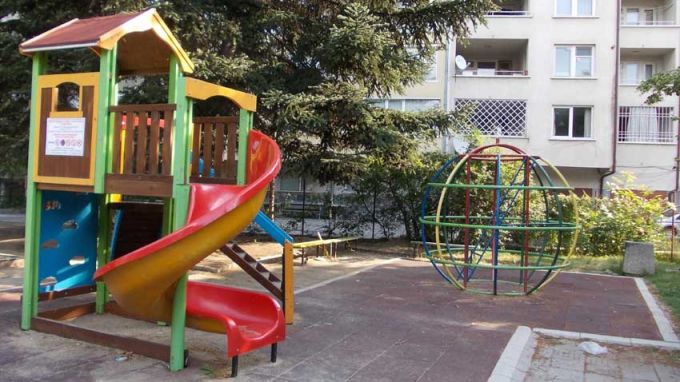 6
6
Agapi Aspridou, a journalist at the Bulgarian National Radio, admits that for her the best of Sofia is the Iztok (East) Housing District where she lived happily as a child in the 1970s. Going back in time, she recalls crowded playgrounds and a carefree existence in almost countryside surroundings. Children used to climb trees and pick apples, pears and cherries. Old women used to make fires in the open to cook jam and prepare pickled food for the winter. Springs would come with blossoming flowers everywhere - crocuses, daffodils, hyacinths, tulips. Agapi will never forget the sweet scent of the lilac that her dad planted near the window of her room. Most of the old houses have disappeared today, replaced with high housing blocks where neighbors are strangers to each other and residents suffer from the lack of enough space. Agapi talked to a former neighbor:
“There were two houses here, do you remember?”
„My childhood was just great; we were freedom-loving kids. There were gardens around and no construction grounds at all, just corn fields.”
An acquaintance of Agapi confirms how un-urban life used to be back in the 1970s.
„Once I met an elderly woman in her 80s and asked her where she had been, and she answered, ‘I went to town, son’.”
As a child Agapi loved to hear the whistle of the train, but now the railroad is no longer in use. And it was here, in the Iztok district that Agapi first went to the pictures. Today the famous Iztok Мovie Тheater has typically been turned into a supermarket.
„I am Agapi Aspridou from the Bulgarian National Radio looking for people who remember the times when this supermarket was a cinema hall?”
„O, I keep great memories of the past. Today, I am sad to say it, everything is turned into supermarkets and shopping malls. I remember I was twelve and camе to watch Blake’s 7.”
These dayс the emblematic Pliska Hotel is under reconstruction and the lovely park across is still there and one can bike across it to reach the central lake Ariana. As Agapi grew up she gradually came to know more from an ever-expanding Sofia – from the huge prefab housing districts of Mladost and Lyulin, and from the central part to the suburbs. She discovered more – the lovely Mount Vitosha, a few minutes away from the center of the city, and the resort town of Bankya, today a Sofia suburb. To her the capital city has become the starting point of many journeys, but wherever she goes she is back with love to the city of her sunny childhood.
English Daniela Konstantinova
Photos: Agapi AspiriduWith more 40 thousand archaeological sites and artifacts, Bulgaria is a true open-air museum. In terms of the number of finds, this country ranks third in the world after Italy and Greece. From the Neolithic, eight millennia ago, to..
NATO tests new 'no U.S.' mission model in Balkans NATO is testing its ability to deploy rapidly across Eastern Europe - without direct US support - as Washington shifts its approach to European defence and the war in Ukraine, the Associated Press..
Love blooms with renewed vigour every year on 14 February! Valentine's Day is increasingly being celebrated in Bulgaria as a holiday that inspires lovers to share beautiful moments together. Traditions include the exchange of cards, gifts and romantic..
World Radio Day - 13 February, this year is dedicated to climate change. The choice is no coincidence—2025 has been identified by the Paris Agreement as a..
Love blooms with renewed vigour every year on 14 February! Valentine's Day is increasingly being celebrated in Bulgaria as a holiday that inspires lovers to..
From February 14 to 16, an event under the motto "Love and Wine" will allow Sofia residents and guests of the city to combine the..

+359 2 9336 661
